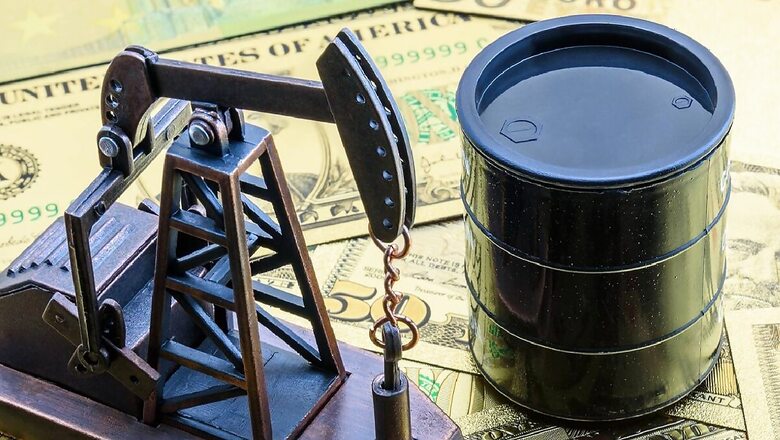
views
With international crude oil prices breaching USD 90 per barrel mark for the first time in 10 months, Indian refiners which are the key beneficiaries of cheaper Russian crude should still be able to clock refining margins of around USD 9-10 per barrel in current fiscal, CareEdge Ratings said on Monday.
With Brent crude breaching the USD 90 per barrel mark this month, the gap between international benchmark prices vis-à-vis Urals – the flagship Russian crude – has widened for Indian refiners as Russian crude can be sourced within the G-7 price cap of USD 60 a barrel, it said.
“The Urals had mostly traded below the G-7 imposed price cap of USD 60 per barrel but have breached the cap in recent weeks whereby it is trading at around USD 69. Upon the rise in prices of the Urals, the share of Russian crude in India’s total crude oil sourcing basket declined to 34 per cent in August 2023 from nearly 40 per cent since the outbreak of the Russia-Ukraine war,” it said.
With Saudi Arabia and Russia deciding to reduce their daily crude oil production by 10 lakh barrels till December 2023, any major softening in crude prices is unlikely in the near term on the back of stable demand prospects.
“In this backdrop, Indian refiners which are the key beneficiaries of cheaper Russian crude should still be able to clock gross refining margins (GRMs) of around USD 9-10 per barrel in 2023-24 fiscal as the likely decline in their margins on processing Brent crude is expected to be offset by the significant expansion in margins on processing Russian crude which can even balance out the potential decline in supply of Russian crude in the near term,” CareEdge said in a note.
Also, with the onset of winter in Western countries, cracks for refined products are expected to improve from the existing levels, further helping the GRMs of Indian refiners.
In FY21, amidst the backdrop of the COVID-19 pandemic, crude oil prices experienced a substantial decline, and the GRMs of Indian refiners were also notably low, owing to reduced demand and logistical challenges.
Following the post-pandemic recovery in demand, crude oil prices saw an upswing in FY22, leading to an improvement in the GRMs of Indian refiners.
“However, FY23 marked an exceptional period for Indian refiners. They achieved exceptionally high GRMs, primarily attributed to disruptions in the demand-supply dynamics resulting from the outbreak of the Russia-Ukraine war in February 2022. Geopolitical factors came into play, significantly increasing the supply of cost-effective Russian crude oil to India.
“Simultaneously, the cessation of natural gas supply by Russia to Europe led to a substantial increase in diesel cracks, further bolstering the GRMs of Indian refiners, especially during the first nine months of FY23,” it said.
India relies on imports for 85 per cent of its total crude oil needs. Russia’s contribution to India’s import portfolio was less than 2 per cent before the outbreak of the Russia-Ukraine war. However, the geopolitical dynamics stemming from this conflict led to a significant increase in the share of cost-effective Russian crude oil in India’s overall crude oil supply.
Throughout FY23, the proportion of Russian crude gradually rose in India’s total sourcing mix, reaching nearly 40 per cent by March 2023. For the entire fiscal year 2023, Russian crude accounted for almost one-fifth of India’s total crude oil imports.
In February 2023, the G-7 nations enforced a price cap of USD 60 per barrel on Russian crude, while Brent crude prices were hovering around approximately USD 83 per barrel. The subsequent easing of Brent crude prices helped maintain stable volumes of Russian crude oil supply to India until July 2023.
However, in August 2023, there was a sharp increase in crude oil prices due to production cuts announced by Saudi Arabia and Russia, while demand prospects remained steady. This resulted in a widening gap between international benchmark Brent crude prices and the price-capped Russian crude.
Consequently, the supply of Russian crude sharply decreased to 34 per cent of India’s total crude imports in August 2023, and the availability of Russian crude for Indian refiners could remain constrained as long as Brent crude prices remain elevated.




















Comments
0 comment